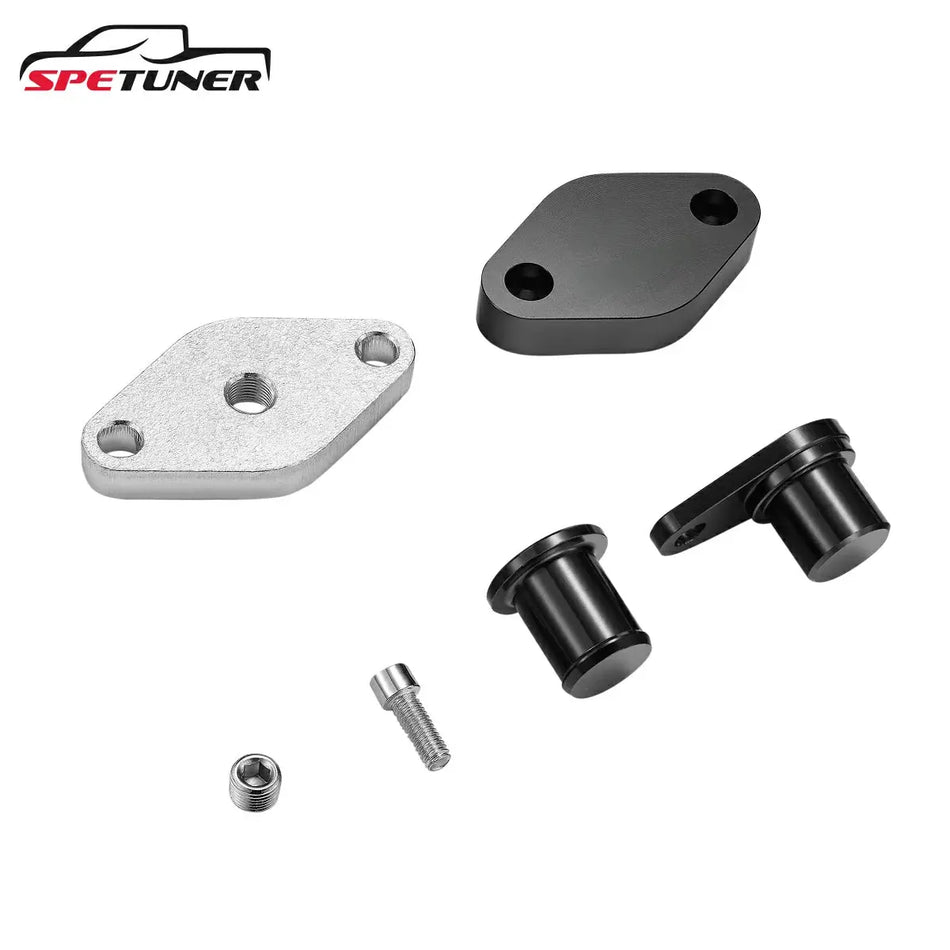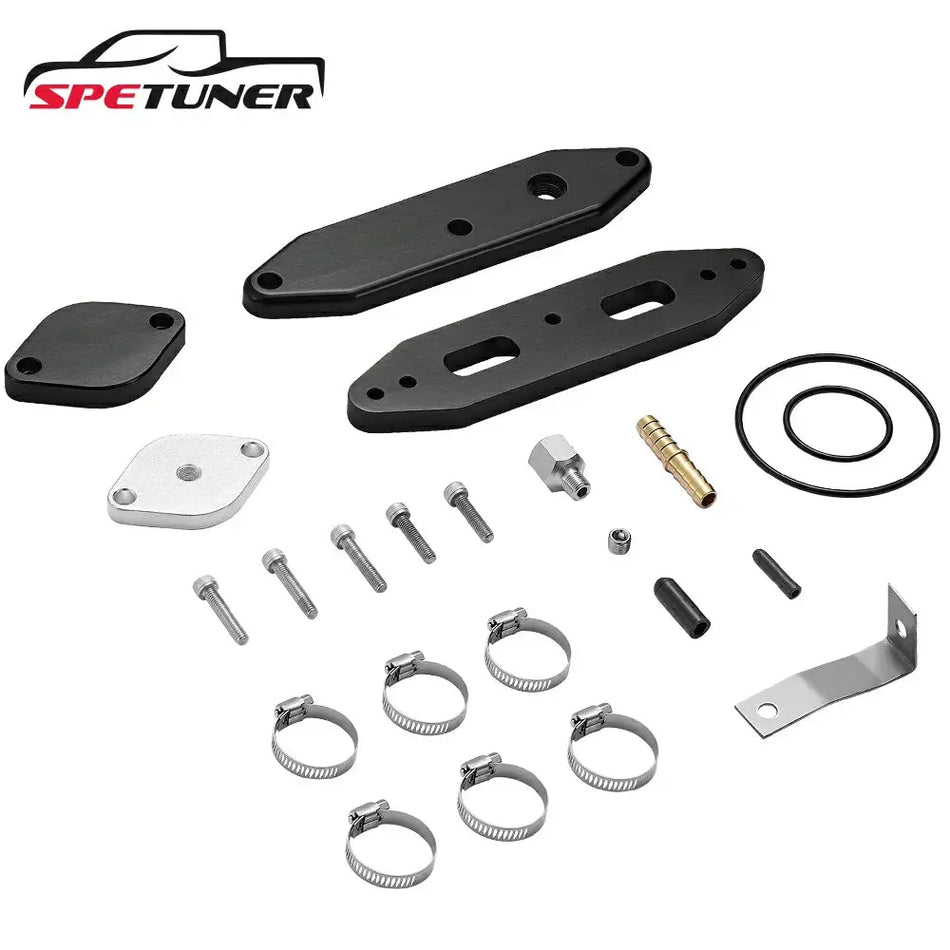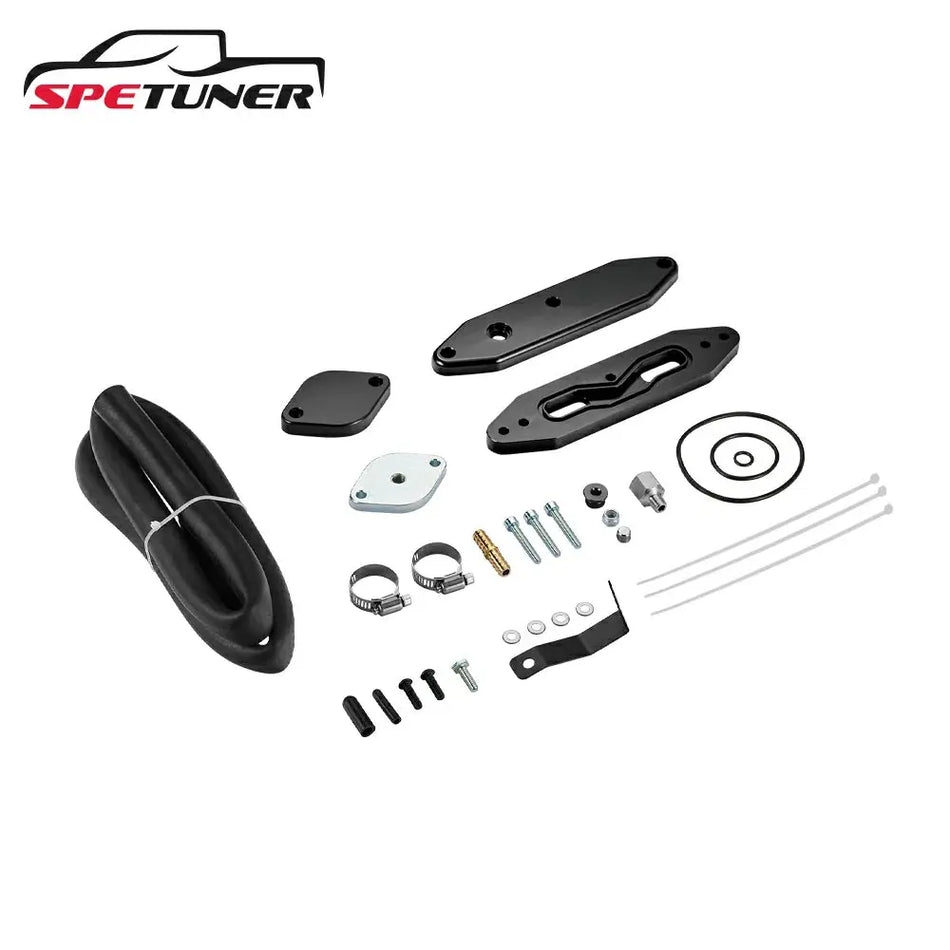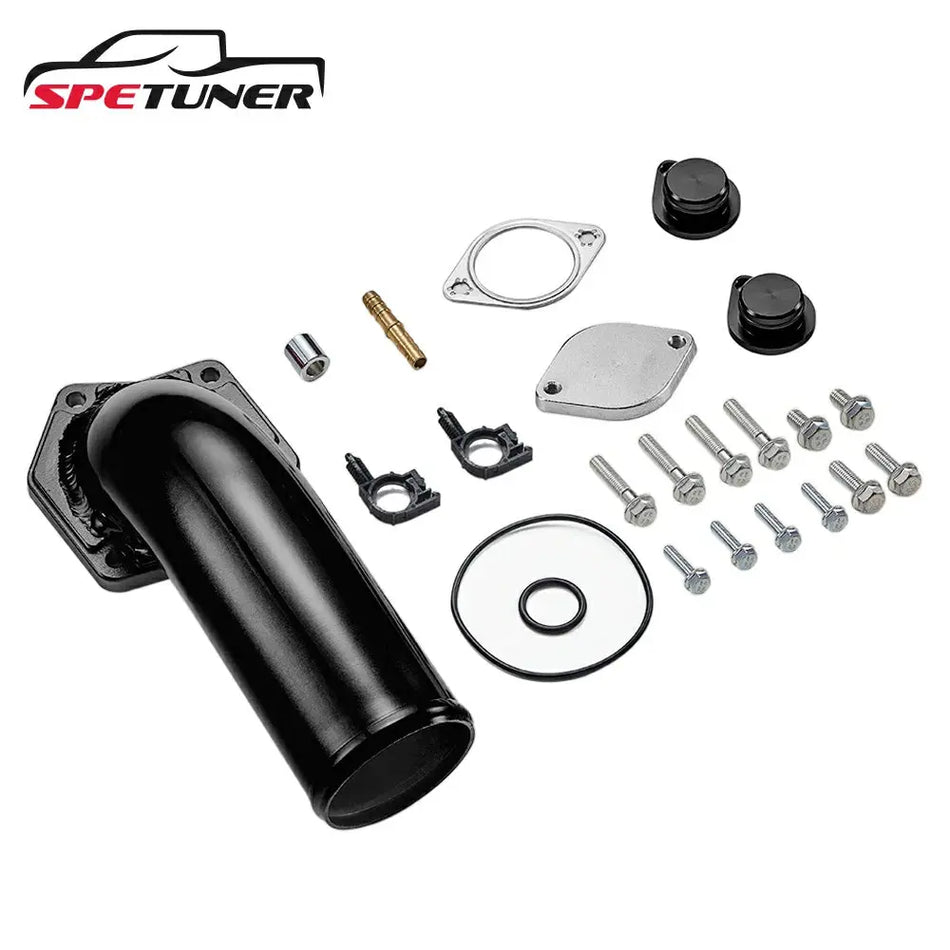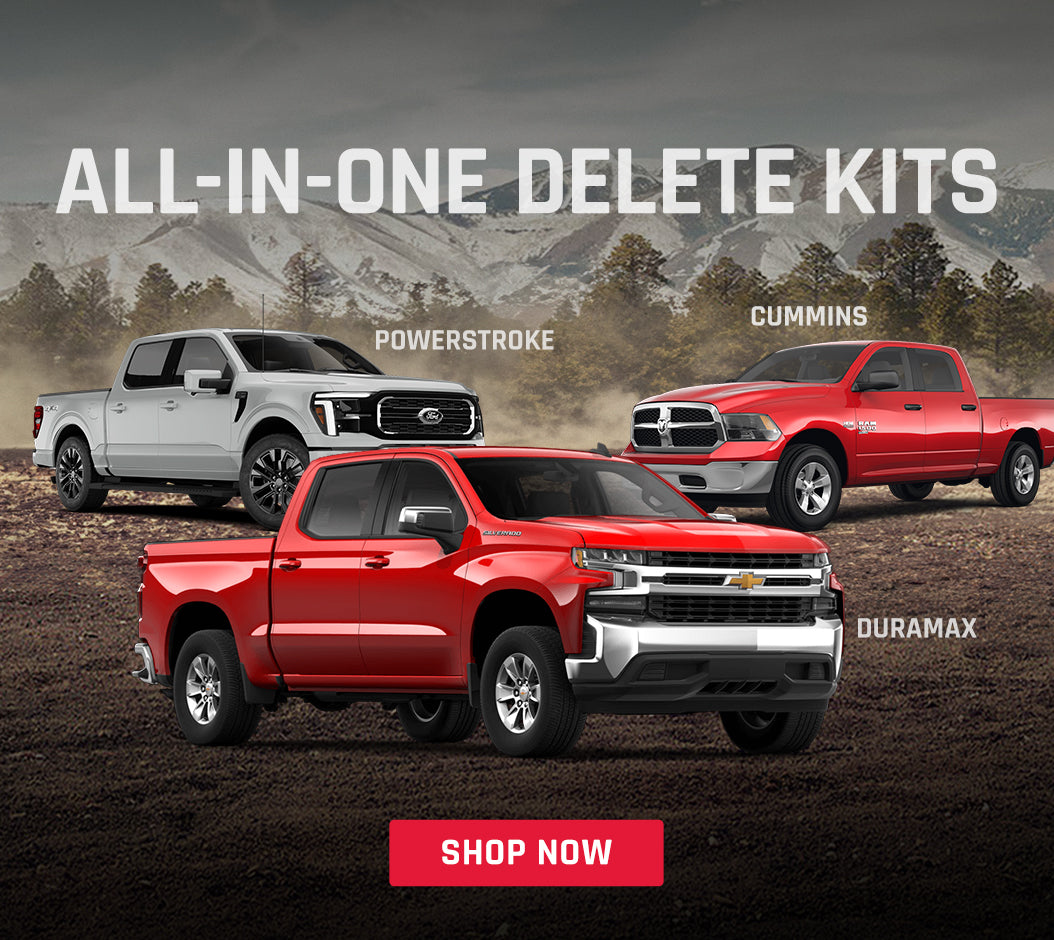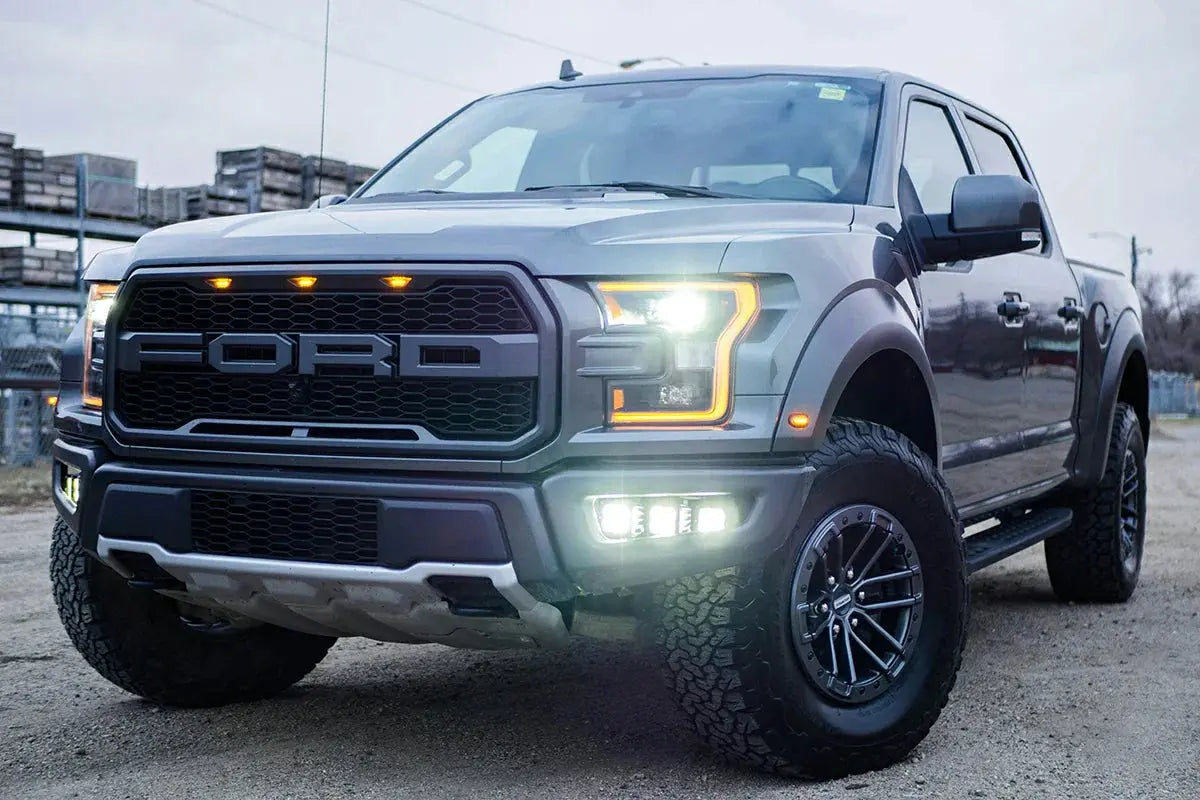What is the DPF system and how does it work?

What is a DPF and what does it do?
A Diesel Particulate Filter, or DPF, is a component installed in most diesel trucks built after 2005. Its primary job is to trap soot and solid particles from the exhaust before they escape into the atmosphere.
Instead of letting raw exhaust shoot straight out the tailpipe, the DPF catches these particles in a porous ceramic structure. Cleaned-up gases then pass through and exit the system. It’s a core part of the emissions control setup in modern diesel engines.
If you're driving a Ford Powerstroke, RAM Cummins, or Duramax — chances are, your truck has one.
How DPF Regeneration Works
Over time, soot builds up inside the filter. To keep it from clogging, the DPF needs to regenerate — basically, burn off the soot by raising exhaust temperatures to around 550°C.
This process happens either:
Passively, during highway driving when exhaust temps naturally stay high, or
Actively, when the engine control unit (ECU) tweaks injection timing, airflow, and turbo boost to kick off regeneration.
In some systems, fuel additives like cerium help lower the burn temperature and speed things up.
Most drivers won’t even notice this happening — unless something goes wrong.
Types of DPF Systems You’ll See
There’s more than one type of DPF layout, depending on the truck make and model:
Stand-alone DPF with a separate catalytic converter
A combined unit where DPF and catalyst share a housing
Coated filters placed further down the exhaust line
Close-coupled systems, mounted near the exhaust manifold, are designed to heat up fast
These setups are all engineered to meet emissions regulations — but they also vary in how easily they clog or regenerate.

Common Problems Diesel Truck Owners Face with DPF Systems
Short Trips and Failed Regeneration
If you're mainly driving short distances or doing a lot of city driving, your truck’s DPF likely isn’t getting hot enough to regenerate properly.
That means soot keeps building up inside the filter. Eventually, the exhaust can’t flow right, and your engine can’t breathe. Regeneration might try to kick in, but the conditions aren’t ideal — low speed, low RPMs, low temps — so it fails.
You won’t notice it at first. But eventually, performance drops, the engine may run rough, and a warning light shows up on your dash.
DPF Warning Lights and Limp Mode
Most diesel trucks are smart enough to warn you before things get critical.
Once your DPF hits around 46% blockage or about 30g of soot, the ECU throws a DPF warning light. It’s telling you to get on the highway and hold steady speeds so it can regenerate.
Ignore that, and once you hit about 76% blockage, the truck goes into limp mode. You’ll feel a major drop in power. At that point, regeneration can’t fix it — you’re looking at a forced service regen, or worse, a full-on replacement.
High Maintenance Costs and Downtime
A clogged DPF isn’t just annoying — it’s expensive.
Cleaning the filter takes time and special equipment. Replacing it? That could set you back anywhere from $1,500 to $3,000+ depending on the truck. Not to mention the downtime.
And if you're running additives, those tanks don’t refill themselves. Let it run dry, and some trucks will lock out the ignition completely until the system is refilled and reset.
For many hard-working truck owners, these aren’t just annoyances — they’re business disruptions.

When Is It Time to Consider a DPF Delete?
Your DPF Light Is Coming on Constantly
If your DPF warning light keeps flashing, even after you've tried highway runs or regen procedures — that's a red flag. It likely means the filter is clogged beyond what normal regeneration can handle.
When regen fails repeatedly, it’s not just annoying — it’s your truck telling you it’s suffocating.
Your Truck Is in Limp Mode or Losing Power
You hit the throttle, but the truck won’t pull. RPMs are capped, and the boost feels nonexistent. Welcome to limp mode.
At this stage, the ECU is actively cutting performance to protect the engine. It’s a major inconvenience if you’re towing, hauling, or relying on your truck for work. If this becomes a pattern, it’s a strong indicator that your emissions system is holding your truck back.
Exhaust Temps Are Spiking or Staying Low
Both extremes are bad news.
If your EGTs are way up, it may be due to constant regen attempts — and that kind of heat can stress turbos, manifolds, and sensors. On the flip side, low exhaust temps during short trips prevent regen from happening at all, leading to buildup.
Either scenario points to a system that’s no longer efficient or practical for your driving style.
You’ve Already Replaced or Cleaned the DPF Before
Many diesel owners go through one or two DPF cleanings or replacements before they realize: this is a cycle.
If you’ve already spent good money trying to fix a DPF that keeps clogging, it may be time to consider a more permanent solution — especially if your truck is used off-road, for towing, or in agriculture.
Your Truck Is Used for Off-Road, Heavy Duty, or Non-Highway Applications
Let’s be clear: DPF deletes are intended for off-road or race-use-only vehicles in regions where it's legal to modify emissions systems.
But if your truck’s real job is pulling trailers on private land, plowing fields, or tackling terrain where emissions compliance isn’t a factor — a DPF delete can bring back performance, improve efficiency, and simplify maintenance.
Why Diesel Truck Owners Choose to Delete the DPF System
Regain Lost Horsepower and Improve Throttle Response
DPF systems create backpressure — and backpressure kills performance.
Once the filter starts clogging, you’ll notice sluggish throttle, poor spool-up, and overall reduced power. Removing the DPF opens up the exhaust flow, letting your engine breathe and respond the way it was built to.
For many truck owners, the difference is night and day.
Reduce Heat Stress and Extend Engine Life
Continuous regen cycles generate serious heat — not just in the DPF, but in the entire exhaust and turbo system.
This extra heat stresses components like the EGR, turbocharger, and even head gaskets. By removing the DPF, you eliminate one of the key sources of that thermal buildup. Less heat means longer-lasting parts and fewer surprise repairs.
Cut Maintenance Costs and Downtime
DPF service isn’t cheap. Cleanings, diagnostics, sensor replacements, and fluid refills add up fast — not to mention the labor.
A DPF delete is a one-time investment that can prevent recurring costs and eliminate regeneration issues. No more scheduled regens, limp mode headaches, or “service DPF” lights every few months.
Unlock Full Potential with Other Performance Mods
The DPF is often the bottleneck that limits what your other upgrades can do. Whether you're running an intake, tuner, turbo, or upgraded injectors — deleting the DPF lets those parts work together efficiently.
It’s also a common first step for diesel owners planning a full-performance build.

What SPETUNER Offers for DPF Deletes
High-Quality DPF Delete Kits for Diesel Pickups
We provide vehicle-specific DPF delete kits engineered for a clean, bolt-on installation across popular diesel platforms — including Ford Powerstroke, RAM Cummins, and GMC/Chevy Duramax.
Our kits are more than just “delete pipes.” They’re part of a broader performance system that addresses both flow and function. They're ready for real-world use, built with high-grade stainless steel, mandrel bends, and precision flanges.
A Complete DPF Delete Solution – Using the L5P as an Example
Let’s take the 6.6L Duramax L5P (2017+) as an example.
Most people think deleting the DPF means just removing one part. In reality, the DPF sits in the middle section of the exhaust — just after the downpipe and before the muffler/rear section.

4"/5" 2017+ L5P 6.6 Duramax DPF Delete Race Pipe Chevy GMC
L5P 6.6 Duramax DPF Delete
$298.00
Buy Now
A complete performance upgrade should include:
Downpipe (bolts directly to the back of the turbo)
Downpipe-back exhaust (includes DPF section, mid-pipe, and tail section)
Optionally: EGR delete kit and intake upgrades for full airflow optimization
So when you go for a full delete, don’t just stop at the filter. A Turbo-Back exhaust (Cummins style), or Downpipe + Downpipe-Back (L5P setup), opens up your whole system — from turbo to tailpipe.

That’s how you get maximum gains in spool-up, exhaust sound, cooling, and horsepower. And that’s exactly what we at SPETUNER provide — not just a piece, but the full flow path.
ECU Tuning Matched to Hardware Upgrades
Deleting emissions hardware without tuning leads to codes, regen errors, and drivability issues.
Our custom ECU tunes are designed to:
Disable DPF regen cycles and associated sensors
Prevent limp mode or CEL (check engine light)
Optimize fueling, boost, and timing for your specific hardware
Improve throttle response and torque curve, especially under load
We work platform-specific — meaning your L5P gets L5P-calibrated tuning, not a one-size-fits-all flash.
Durability + Fitment for Major Diesel Platforms
All delete solutions from SPETUNER are tested under real-world load conditions — towing, off-roading, snow work, or heavy hauling.
We cover:
6.6L Duramax L5P / LML
6.7L Cummins (2007.5+)
6.7L Powerstroke (2011–2022)
Everything from piping to sensors to gaskets is designed to fit and last.
Expert Support from Real Diesel Techs
We’re not just a parts warehouse — we’re a diesel performance partner.
Our team is ready to answer your questions, walk you through install considerations, and help you choose the right setup for your power goals and driving conditions.
Whether you're doing your first DPF delete or building a full race-ready setup, we’ve got your back.
Legal Use Disclaimer
All delete kits and tuning products are intended for off-road and competition use only. SPETUNER encourages all customers to comply with local, state, and federal emissions regulations.
Is a DPF Delete Right for You? A Practical Guide for Diesel Truck Owners
Know Your Legal Boundaries First
Before anything else: check your local and federal laws.
In many regions, deleting emissions equipment like the DPF is only legal for off-road or competition-use vehicles. That includes farm trucks, trail rigs, or race builds not registered for street use.
If you’re unsure, reach out — we’re happy to help you understand what’s allowed in your area before you modify anything.
Consider Your Driving Style and Workload
Ask yourself:
Do you mostly do short trips or low-speed driving?
Is your truck often under heavy load — towing, hauling, or climbing grades?
Have you experienced frequent regen failures or limp mode?
If the answer is “yes” to any of these, you’re a strong candidate for a delete. DPF systems are designed for clean-burning conditions — but they fall short in real-world, high-demand use cases.
Think About Long-Term Goals and Mods
Planning to add a bigger turbo, upgraded intake, or fuel system in the future?
DPF systems can become a major bottleneck for airflow and exhaust velocity. Many performance upgrades won’t reach their full potential unless the entire exhaust path is freed up.
If performance is the goal, deleting emissions components is often a foundational step in the build process — when used appropriately and legally.
Combine Deletes for Maximum Results
A DPF delete works best when paired with:
EGR delete – eliminates soot re-circulation
High-flow intake system
Custom ECU tuning
SPETUNER offers full packages that take the guesswork out — giving you a matched system that works together from day one.
When In Doubt — Ask an Expert
Not sure what’s best for your truck?
Reach out to our team at SPETUNER. We’ll walk you through your setup, your goals, and your usage to help you make the right call.
Our goal isn’t just to sell a part — it’s to help you build a truck that performs reliably and powerfully, with zero surprises.
Understanding the DPF System: Make the Right Call for Your Truck
Not Every Truck Needs a Delete — But Every Owner Needs to Understand It
The DPF system is a complex but crucial part of modern diesel engines. When it works properly, it helps reduce harmful emissions and keeps your truck road-legal.
But when it starts to fail — especially under heavy-duty or off-road use — it can become a serious performance and reliability issue.
That’s why understanding how the system works, recognizing the warning signs, and knowing your options are key to protecting your truck and your wallet.
SPETUNER Gives You the Tools to Take Control
We’re not just here to sell delete pipes and tunes — we’re here to help diesel owners get the most out of their trucks.
Whether you’re battling repeated regen cycles, planning a full build, or just want advice on the right solution for your usage — we’ve got you covered with:
Complete DPF delete systems
ECU tuning calibrated per platform
Expert guidance and support every step of the way
If you're serious about building a better-performing, longer-lasting diesel — let’s build it the right way.
FAQs
Q1: What is a diesel particulate filter (DPF) and what does it do?
A1: A DPF traps soot and solid particles from diesel exhaust to reduce emissions and protect the environment.
Q2: How can I tell if my DPF is clogged or failing?
A2: Common signs include warning lights, reduced engine power, frequent regen cycles, and poor throttle response.
Q3: What causes frequent DPF regeneration or failure?
A3: Short trips, low-speed driving, or a malfunctioning sensor can prevent proper regeneration, leading to buildup.
Q4: When should I consider deleting my DPF system?
A4: If your truck enters limp mode often, suffers from constant regen issues, or is used off-road, it may be time to consider a delete.
Q5: Is DPF delete legal for on-road use?
A5: No, DPF deletes are only legal for off-road, race, or competition use in most regions. Always check local laws.
Q6: What parts are included in a complete DPF delete kit?
A6: A full setup often includes the downpipe, downpipe-back exhaust, and custom ECU tuning to support the hardware.
Q7: Do I need tuning after deleting the DPF?
A7: Yes, custom ECU tuning is essential to disable regen logic, prevent error codes, and optimize performance.
Q8: Will deleting my DPF improve fuel economy and power?
A8: Yes, removing exhaust restrictions can restore lost power and improve fuel efficiency, especially under heavy loads.
Q9: Can SPETUNER help me choose the right DPF delete kit?
A9: Absolutely. We offer vehicle-specific kits and expert support to match your truck’s needs and usage.
Q10: What diesel platforms does SPETUNER support for deletes?
A10: We offer full DPF delete solutions for Ford Powerstroke, RAM Cummins, and GM Duramax platforms.
📌 Reference Note
This article is based in part on the technical insights shared in the video “Understanding the DPF Systems” published by Garage Gurus.
You can watch the full video on YouTube here:


